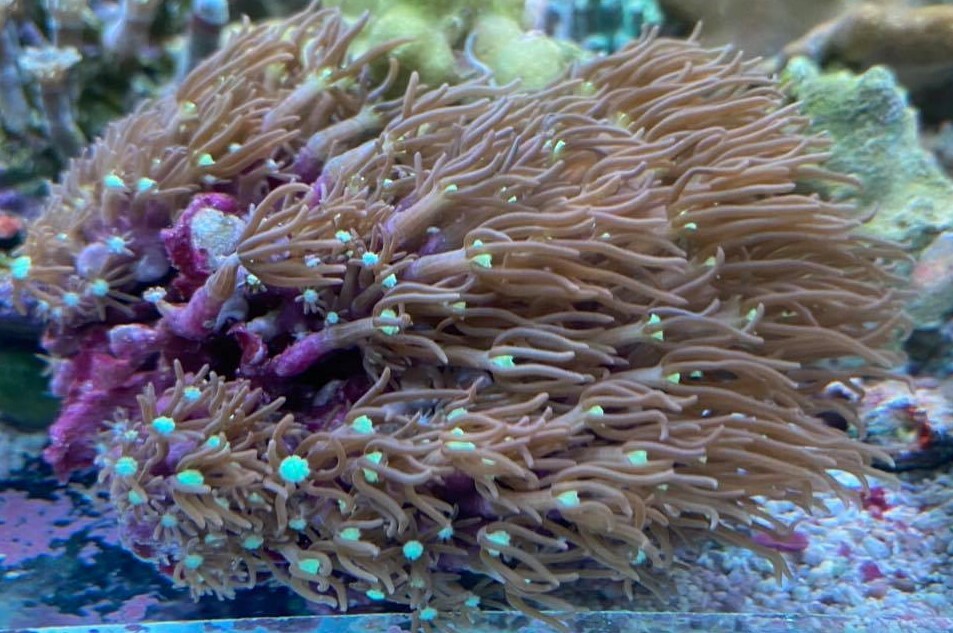Purple Star Polyps
Have you ever heard of purple star polyps? If not, you're missing out on one of the most popular and beloved coral species in the aquarium community. These small, lavender-colored polyps are both visually stunning and relatively easy to care for, making them a favorite among reef enthusiasts. But what makes these creatures so special, and how can you ensure that your own purple star polyps thrive in your aquarium?
Pain Points of Purple Star Polyps
One potential challenge with purple star polyps is that they are known to be fast growers. While this may sound like a good thing, it can actually pose some problems. For example, their growth can quickly overtake other corals in the tank, leading to competition for light and nutrients. In some cases, this can cause damage to other corals or even lead to their death. Additionally, purple star polyps produce a chemical toxin that can be harmful to other invertebrates, particularly if they are in close proximity.
What Are Purple Star Polyps?
Purple star polyps are a type of soft coral that belong to the Pachyclavularia genus. They are native to the Indo-Pacific region and can grow to be several inches in diameter. As their name suggests, their polyps are typically a bright, vibrant purple color, although they can sometimes have a bluish tinge as well. Purple star polyps are known for their hardiness and adaptability, as well as their ability to rapidly spread and cover large areas of rock or coral.
Summary of Main Points
Overall, purple star polyps are a popular and visually striking choice for reef aquariums. However, it is important to be aware of the potential issues they can cause if not carefully monitored. Specifically, their fast growth can lead to competition for resources and harm to nearby invertebrates. Nonetheless, with proper care and attention, they can be a beautiful and valuable addition to a thriving reef ecosystem.
The Popularity of Purple Star Polyps
In my experience as an aquarium enthusiast, there are few corals that are as universally loved as purple star polyps. They are especially popular in nano tanks, where space can be limited and their small size and prolific growth make them an ideal choice. I first added them to my own tank several years ago and was blown away by their beauty and hardiness. They quickly spread across my rockwork and provided a stunning backdrop for the other corals in my tank.

One of the things that makes purple star polyps so appealing is their ability to add a pop of color to any tank. Whether you have a primarily green or brown-themed tank, the bright purple of these polyps is sure to catch the eye. Furthermore, their unique morphology - with their polyps extending up and out from the rock - creates a dynamic and interesting visual effect that is unlike any other coral.
Caring for Purple Star Polyps
So, how can you ensure that your purple star polyps are healthy and thriving in your aquarium? As mentioned, one of the biggest concerns with these corals is their rapid growth, so it is important to keep them in check. This can be done by providing them with plenty of space to spread out, trimming them regularly, or physically removing portions of the colony as needed.

Additionally, purple star polyps require moderate to high levels of lighting and water flow to promote good health and growth. They are also tolerant of a wide range of water parameters, although they do prefer stable conditions. As with all corals, it is important to monitor water quality regularly and make adjustments as needed to maintain ideal conditions for your purple star polyps.
FAQs About Purple Star Polyps
Q: Are purple star polyps good for beginners?
A: Yes, purple star polyps are generally considered to be a good choice for beginners due to their hardiness and adaptability.
Q: Do purple star polyps require a lot of care?
A: While purple star polyps do require some attention - particularly with regards to trimming and monitoring their growth - they are generally easy to care for and can thrive in a variety of tank conditions.
Q: Is it safe to keep other corals near purple star polyps?
A: While purple star polyps can produce a harmful toxin, they are generally safe to keep with other corals as long as they are not directly competing for space or resources.
Q: Can I propagate my purple star polyps?
A: Yes, purple star polyps are relatively easy to propagate through fragging. This can be done by carefully cutting off small portions of the coral and attaching them to a new rock or surface.
Conclusion of Purple Star Polyps
Overall, purple star polyps are a hardy, beautiful, and popular choice for reef hobbyists. Their bright purple color and dynamic polyp structure make them a standout addition to any aquarium, while their adaptability and ease of care make them a good choice for beginners. As with any coral species, it is important to be aware of their specific needs and potential challenges in order to ensure that they thrive in a healthy and sustainable ecosystem.
Gallery
Clove Star Polyps - Aquatics To Your Door

Photo Credit by: bing.com / star polyps clove corals purple wishlist add aquaticstoyourdoor algaes
Star Polyps (Pachyclavularia Violacea) 1318-star-polyps-night.jpg
Photo Credit by: bing.com / star polyps 1318 night violacea geddis resolution high
Purple Star Polyp (Pachyclavularia Vioacea)
Photo Credit by: bing.com / purple star polyp
Purple Star Polyp

Photo Credit by: bing.com / polyp
PURPLE STAR POLYPS - ReeferMadness775.com

Photo Credit by: bing.com / polyps
